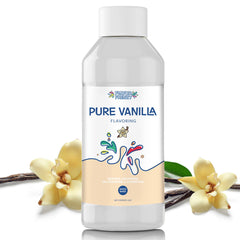Your Cart is Empty
Potential of Chitosan: Nature's Biopolymer for Progressive Industries

Chitosan is a naturally occurring polysaccharide derived from chitin, boasting a multifaceted profile of biological activities including robust antimicrobial and anti-inflammatory properties. These attributes make it a valuable component in various fields such as biomedical, pharmaceutical, agricultural, and cosmetic applications.
Biodegradable and non-toxic, chitosan has been historically utilized in drug delivery systems, wound healing, and even food packaging due to its unique mucoadhesive and bioadhesive properties.
With extensive applications and ongoing research, understanding chitosan's natural functions, historical uses, and biosynthesis is essential for optimizing its benefits. Over 149 citations in recent research highlight its versatility and potential.
Chitosan's use in agriculture can reduce environmental stress, strengthen seed vitality, improve crop yield, and enhance plant resistance to pathogens. Its application in various sectors underscores the importance of exploring its full range of possibilities.
Want to purchase chitosan – Get your custom quote today!
See also our products:
Natural Functions of Chitosan
Chitosan, a biodegradable and biocompatible polysaccharide derived from the deacetylation of chitin, exhibits a range of natural functions that make it a highly versatile biopolymer.
It possesses antimicrobial, antifungal, and anti-inflammatory properties, making it effective in wound healing and plant defense.
Chitosan also has film-forming and moisture-retentive abilities, enhancing its use in cosmetics and food packaging.
The global chitosan market is projected to reach USD 91.99 billion by 2033, growing at a CAGR of 22.31% from 2024 to 2033, driven by its extensive applications in biomedical, cosmetics, and water treatment sectors.
Historical Uses and Applications
Chitosan, a derivative of chitin, has been under scrutiny since its discovery in 1859 by Charles Rouget, with its significance evolving across various sectors.
- Medical and Pharmaceutical Uses: Chitosan is extensively employed in drug delivery, wound healing, and gene therapy due to its biocompatibility and biodegradability. It is also used in antimicrobial applications and regenerative medicine.
- Food Industry: Chitosan is utilized in food packaging due to its film-forming properties and potent antimicrobial activity. It is also used in food coatings to enhance sensory properties and as a dietary fiber with hypocholesterolemic activity.
- Cosmetics: It is leveraged for its anti-oxidant and antibacterial properties, enhancing skin hydration and product stability. Its high water-holding capacity makes it beneficial for cosmetic formulations.
- Agriculture: Chitosan is applied in controlled-release fertilizers and in preventing abiotic stress in plants. It is also used to increase water availability in plants, demonstrating its versatility in agricultural applications.
Over 58,625 scientific articles were published on chitosan between 2000 and 2017, highlighting its rapid growth and widespread exploration across various industries.
Biomedical and Pharmaceutical Uses
Chitosan has emerged as a pivotal material in biomedical and pharmaceutical applications due to its biocompatibility, biodegradability, and non-toxicity. This natural polymer has been extensively used in various fields, including drug delivery, vaccine adjuvants, antimicrobial agents, tissue engineering, and wound healing.
Chitosan nanoparticles can encapsulate drugs, ensuring targeted and sustained release, thereby enhancing therapeutic efficacy.
Recent studies have shown that approximately 70% of pharmaceutical applications of chitosan are focused on drug delivery, emphasizing its potential as a carrier material.
Chitosan's unique properties, such as its ability to form hydrogenic and ionic bonds with drug molecules, make it an ideal candidate for drug delivery systems. Furthermore, chitosan derivatives have been developed to improve its solubility and expand its applications in biomedical fields.
Over the past decade, research in tissue engineering has increasingly utilized chitosan-based nanoparticles to regenerate tissues, including bone, cartilage, and cardiac tissues.
The versatility of chitosan in biomedical applications underscores its potential as a natural, safe, and effective material for various medical and pharmaceutical uses.
Agricultural and Cosmetic Applications
Chitosan, derived from the exoskeletons of crustaceans and fungi cell walls, has expanded its applications beyond biomedical uses into agricultural and cosmetic fields due to its versatile and eco-friendly properties.
- Enhanced Crop Protection: Chitosan exhibits strong antimicrobial and antifungal properties, effectively protecting seeds, roots, and crops from pathogens and thereby enhancing plant health and resilience.
- Plant Growth Maximization: It stimulates plant growth by triggering the plant's immune response, promoting beneficial microorganisms, and inhibiting pathogens.
- Cosmetic Applications: Chitosan is utilized in skin care products for its moisturizing, UV protection, and antimicrobial properties. It forms nanocapsules for the controlled release of active ingredients in cosmetic applications.
- Nutrient Efficiency: Chitosan improves nutrient uptake and efficiency, enhancing plant development and yield through its ability to chelate and slowly release essential nutrients.
- Stress Tolerance: It aids in abiotic stress tolerance, helping plants cope with drought, salinity, and heavy metal stress by enhancing water retention and osmotic regulation.
- Over 90% of recent agricultural studies emphasize the potential of chitosan to replace synthetic pesticides and fertilizers, contributing to sustainable agriculture practices.
- Delivery Systems: Chitosan can be formulated into various delivery systems, including foliar sprays, seed coatings, and soil drenches, making it a versatile tool in modern agriculture.
Biosynthesis and Commercial Availability
Chitosan is commercially produced through the deacetylation of chitin, which is found in crustacean exoskeletons, fungi, and insect shells. The degree of deacetylation can be controlled by varying temperature, pH, and reaction time, significantly affecting its properties such as solubility and molecular weight.
Over 100 billion tons of chitin are biosynthesized annually, making it the second most abundant biopolymer after cellulose.
Recent advances in biotechnology have led to the exploration of fungal sources for chitosan production, offering non-seasonal and stable sources of raw material.
The production process involves treating chitin with alkaline solutions to remove acetyl groups, resulting in the formation of chitosan.
The molecular weight of commercially produced chitosan typically ranges from 3,800 to 20,000 daltons.
Chitosan's versatility and biocompatibility have made it a valuable material in various industries, including biomedicine, agriculture, and food packaging.
FAQ:
What are the agricultural uses of chitosan?
Agricultural Applications: Chitosan is used as a natural seed treatment and plant growth enhancer, acting as an eco-friendly biopesticide that boosts the innate ability of plants to defend against fungal infections.
Crop Protection: It enhances photosynthesis, promotes plant growth, stimulates nutrient uptake, increases germination and sprouting, and boosts plant vigor.
Environmental Impact: Reduces environmental stress due to drought and soil deficiencies, strengthens seed vitality, improves stand quality, increases yields, and reduces fruit decay.
How is chitosan produced?
Production: Chitosan is primarily derived from the deacetylation of chitin found in crustaceans like lobsters, crabs, and shrimp, but is also sourced from fungi and insects for vegan markets.
What are the key properties of chitosan?
Biological Properties: Exhibits poor solubility in neutral and basic media, but is soluble in aqueous acidic media. It has variable molecular weights and degrees of deacetylation, affecting its technological performance.
Recent Statistics and Data
- Production Sources: There is a growing interest in producing chitosan from fungi and insect cuticles, driven by vegan demands and the need for better-controlled samples with low viscosity and high deacetylation degrees.
- Market Trends: The increasing demand for chitosan in various industries has led to diversified acetylation methods and processing techniques.
Conclusion
Chitosan, with its multifaceted applications and ongoing innovations, remains a pivotal material across various industries. Its natural antimicrobial and biodegradable properties make it essential for sustainable practices in agriculture, biomedical applications, and beyond. The emerging trends in production from fungal sources and the growing demand for chitosan underscore its potential for continued scientific and industrial advancement.
Want to purchase chitosan – Get your custom quote today!





